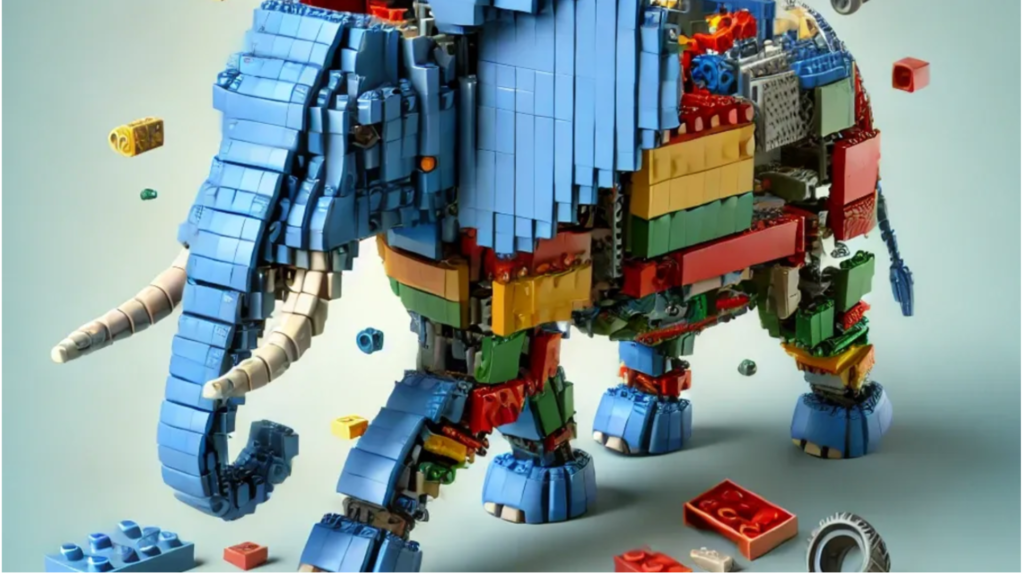(and the driver behind TAU)
As we prepared for the launch of TAU, I have been thinking and writing a lot about AI in Marketing. Many of the commenters thanked me for my work, but asked for details on use cases. This is absolutely correct because it is in the identification of use cases and how they are challenged that truly separates the wheat from the chaff in AI adoption.
For that reason, use-cases and utilisation was the starting point which has shaped the whole TAU model. As we worked through these we’ve broken them down into six big categories and around 40 sub-categories.
However, ask any expert how to do anything and the answer is always “it depends.” It does: there’s no cookie cutter solution. So, instead, I wanted to talk through a couple of common examples which help explain our rationale for the TAU model.
Let’s look at a typical use-case in Creative Production. You could just ask an AI to produce the creative for you in one short prompt: “Build me an ad to sell a mobile phone,” you might say. More advanced prompts will lead to better results but, at this stage of AI, this approach will lead to pretty poor results. Today, image generators for example, can’t really handle generating text very well, but AI can still be highly effective if used another way.
Chunk up the elephant

The key is to “chunk up the elephant” (a phrase many will know I am very fond of).
At the stage AI is at today it’s particularly pertinent: breaking down the tasks into their components leads to the best results. Even when it’s possible to skip these steps, it’s still best to understand them and build them into a process because this is how you take control of quality and progress.
AI in Creative Production
Consider that most simple static creative is a collection of images, a background, a theme and groups of text all assembled together. So the first step is to use an AI to work on each of these component pieces and use a different AI or tool for each.
In the past, just gathering a library of images could take a lot of time and multiple photo shoots. Today, much of this can now be replaced by AI image generation to a high level so the first AI component can be that one.
- A second AI can, separately, help the creative author produce copy that can be used, edited or tested.
- A third AI might apply or alter a theme.
- A fourth AI might apply different combinations to produce different sizes or formats.
- A further AI might then be used to check the resulting creative against brand guidelines.
It is through variations on the above process that, today, some creative teams are working far more effectively on content creation, without compromising on quality.
AI in Media Buying
Let’s take a look at another use case like Media Buying. This area seems to have been less considered, but, I believe, it may be the area where AI can be used particularly effectively. Media planning is a very broad area and it’s not possible here to go through it fully, but let’s explore some AI techniques that can have huge value in media buying planning (all of which are best done to support a human media planner.)
- A traditional LLM with access to the web can, with good prompts, produce a good initial media plan and suggest data points. Try this for yourself.
- A custom LLM can be trained with an advertiser’s first party data and also data from selected partners (the likes of Experian, Nielsen, TGI, YouGov etc.) This will allow the AI to pull insights and planning data from a broad and amazing dataset.
- A synthetic data model can be also created that will simulate people’s reactions to a range of messages and concepts. (Look out for a whole article on this concept soon.)
- All of the above can be calibrated by an AI against previous performance data and related metrics (attention, views). This can assist in media planning crossing over to scenario planning and forecasting as the sophistication develops.
- Crucially the outputs of the completed planning can be coded by AI to be able to be used directly by a range of channels and systems (different channels will need different data points – more on this to follow in our Updates).
There’s no one size fits all solution here: different LLMs may provide better outputs for component tasks, different diffusion models may produce better image techniques, etc. Machine Learning is a powerful tool that needs to be integrated. AI agents can stitch tasks together to create a powerful whole. On top of that are traditional API, algorithmic, visual or other tools. In short, there’s a lot of variables to consider.
What both of these typical use-cases highlight is the need for an understanding of 3 core things:
- Technology expertise – in order to be able to integrate the technology appropriately to deliver the best results.
- AI expertise – the capabilities of AI, the different types of AI and how they can be deployed
- Utility – the marketing context in which AI will be applied (the job to be done).
Deconstructing to reconstruct

Essentially, anything you want to do is invariably a collection of different sub-events which need to work in harmony. The critical skill set is knowing how to break up the components, work on improvements and then reassemble them.
This requires broad marketing knowledge to know what good looks like for Marketing, but also the ability to envisage how that should be delivered technically. You also need to be able to explain the technical tasks and requirements to the relevant stakeholders internally.
An end to AI missing the mark for marketers

Having a few, but not all of these aspects, is why, I believe, other attempts at helping brands develop AI have missed the mark. It was this frustration with the gap between the potential of AI for Marketing and the challenges in delivering on that which became the driving force behind TAU (Technology, AI, Utility).
We believe the greatest value for organisations will come from AI empowered internal Marketing teams. So, the goal of TAU is to bring in the relevant combination of experts to support Marketers (having to juggle getting on with the day-to-day and making this transition). That led us to set up TAU as a collective of experts spanning Marketing, Technology and AI expertise, who could collaborate in different ways depending on the specific needs of clients.
In summary, understanding the use-cases is the starting point, but knowing how to chunk up the elephant and design the technology is the difference between mediocre improvements and game-changers – and that’s the premise on which TAU is built.



